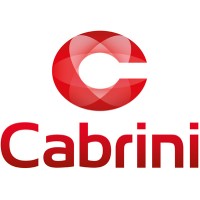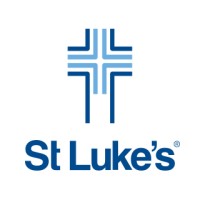
Cabrini HEALTH Company Cyber Security Posture
cabrini.com.auWelcome to Cabrini Health Cabrini is owned and operated by the Missionary Sisters of the Sacred Heart of Jesus who came to Australia in 1948 to take over the management of a 45-bed community hospital named St Benedict’s. Cabrini now has more than 800 beds and a comprehensive range of health services. There are acute facilities at Malvern and Brighton. The Cabrini Institute supports education and research, in order to continually improve the quality of care and educate tomorrow’s health professionals. Cabrini Technology provides an innovative, independent information and healthcare technology service to organisations throughout Australasia and has headquarters in Mount Waverley. More recently, Cabrini has established an Asylum Seeker and Refugee Health Hub in Brunswick, which provides access to a range of health services for people seeking asylum and newly arrived refugees. Cabrini is a not-for-profit health service and all surpluses are used to develop our services and facilities to provide the best possible care for patients and families. Cabrini supports and operates a number of other programs for disadvantaged people in our community. Patient care is the primary focus of our work and at the heart of all we do.
Cabrini HEALTH Company Details
cabrini-health
1759 employees
21383
62
Hospitals and Health Care
cabrini.com.au
Scan still pending
CAB_3125331
In-progress
Between 800 and 900
This score is AI-generated and less favored by cyber insurers, who prefer the TPRM score.
 Cabrini HEALTH Global Score
Cabrini HEALTH Global Score.png)

Cabrini HEALTH Company Scoring based on AI Models
| Model Name | Date | Description | Current Score Difference | Score |
|---|---|---|---|---|
| AVERAGE-Industry | 03-12-2025 | This score represents the average cybersecurity rating of companies already scanned within the same industry. It provides a benchmark to compare an individual company's security posture against its industry peers. | N/A | Between 800 and 900 |
Cabrini HEALTH Company Cyber Security News & History
| Entity | Type | Severity | Impact | Seen | Url ID | Details | View |
|---|---|---|---|---|---|---|---|
| Cabrini HEALTH | Ransomware | 100 | 4 | 02/2019 | CAB22516223 | Link | |
Rankiteo Explanation : Attack with significant impact with customers data leaksDescription: Cabrini Hospital became a victim of a cybercrime, it was found that a syndicate has hacked and scrambled the medical files of about 15,000 patients from a specialist cardiology unit and demanded a ransom. Some patients were told that their files had been lost but were not given any explanation and others have turned up for appointments for which the hospital had no record. The online gang responsible for the data breach demanded a ransom be paid in cryptocurrency before a password would be provided to break the encryption. According to the reports, a payment was made, but some of the scrambled files have not been recovered, among them patients' personal details and sensitive medical records that could be used for identity theft. | |||||||
Cabrini HEALTH Company Subsidiaries

Welcome to Cabrini Health Cabrini is owned and operated by the Missionary Sisters of the Sacred Heart of Jesus who came to Australia in 1948 to take over the management of a 45-bed community hospital named St Benedict’s. Cabrini now has more than 800 beds and a comprehensive range of health services. There are acute facilities at Malvern and Brighton. The Cabrini Institute supports education and research, in order to continually improve the quality of care and educate tomorrow’s health professionals. Cabrini Technology provides an innovative, independent information and healthcare technology service to organisations throughout Australasia and has headquarters in Mount Waverley. More recently, Cabrini has established an Asylum Seeker and Refugee Health Hub in Brunswick, which provides access to a range of health services for people seeking asylum and newly arrived refugees. Cabrini is a not-for-profit health service and all surpluses are used to develop our services and facilities to provide the best possible care for patients and families. Cabrini supports and operates a number of other programs for disadvantaged people in our community. Patient care is the primary focus of our work and at the heart of all we do.
Access Data Using Our API

Get company history
.png)
Cabrini HEALTH Cyber Security News
Funding roundup
The funding will provide immediate relief, such as temporary housing, food, clothing and school supplies, as well as long-term support, ...
Former Visa chairman and CEO Al Kelly joins GM board
GM announced that Alfred F. Kelly, Jr., former chairman and CEO of Visa Inc., has joined its board of directors.
Victorians Gain Access to Cutting-Edge Precision Cancer Therapies Thanks to Landmark $10M Donation
Cabrini Health, in partnership with Monash University, will treat more cancer patients annually following a $10 million donation.
Roundup: Singular Health gets 510(k) for 3Dicom MD and more briefs
ASX-listed medical technology firm Singular Health Group has received a 510(k) clearance from the US Food and Drug Administration for 3Dicom ...
Medical records at Victorian hospital get hacked
In a suspected ransomware attack, a cybercrime syndicate has hacked and scrambled around 15,000 medical records at a Victorian hospital.
Hackers 'scramble' patient files in Melbourne heart clinic cyber attack
Hackers have “scrambled” patient files at a Melbourne heart specialist clinic in what was reportedly a ransom attempt.
CHRISTUS Spohn Health System Corporation Files Notice of Data Breach in the Wake of Apparent Ransomware Attack
On July 1, 2022, CHRISTUS Spohn Health System Corporation (“CHRISTUS”) filed an official notice of a data breach with the U.S. Department of ...
Australian heart clinic disrupted by ransomware attack
A ransomware attack at an Australian heart clinic has corrupted the medical records of 15,000 patients and disrupted systems for more than three ...
AWA business sold to Cabrini Health
AWA has been sold to Cabrini Health Limited, with the iconic 105-year-old company to be integrated into a new group, Cabrini Technology Services.

Cabrini HEALTH Similar Companies

Vanguard Health Systems
Effective October 1, 2013, Vanguard Health Systems is a part of Tenet Healthcare. Please visit Tenet's LinkedIn page at http://www.linkedin.com/company/5315?trk=tyah&trkInfo=tas%3Atenet%20health Press Release: Tenet Healthcare Corporation (NYSE:THC) has completed its previously announced acquisi

St. Luke's Health System
As the only Idaho-based, not-for-profit health system, St. Luke’s Health System is dedicated to our mission “To improve the health of people in the communities we serve.” Today that means not only treating you when you’re sick or hurt, but doing everything we can to help you be as healthy as possibl

Sienna Senior Living
At Sienna Senior Living, our Purpose is to cultivate happiness in daily life. Our work does not stop at providing the highest quality of service and care to our residents - it goes much further. Each and every day, we strive to bring happiness into our residents’ lives by enabling our team to put

Kaiser Permanente
At the heart of health care, you’ll find Kaiser Permanente. As the nation’s leading not-for-profit, integrated health plan, we make a difference in the lives of members, patients, and communities across the country. With 39 hospitals and more than 734 locations in eight states and the District of

Adventist Health
Adventist Health is a faith-inspired, nonprofit integrated health system serving more than 100 communities on the West Coast and Hawaii with over 440 sites of care. Founded on Adventist heritage and values, Adventist Health provides care in hospitals, clinics, home care agencies, hospice agencies, a

Tokuda Hospital Sofia
Our general hospital is the first hospital of Dr. Tokuda outside of Japan, the flagship project has created a health facility of the highest standards not only for the country, but in the larger geographic region. The capital of Bulgaria, Sofia, was selected by the Tokushukai Medical Corporation and

Frequently Asked Questions (FAQ) on Cybersecurity Incidents
Cabrini HEALTH CyberSecurity History Information
Total Incidents: According to Rankiteo, Cabrini HEALTH has faced 1 incidents in the past.
Incident Types: The types of cybersecurity incidents that have occurred include ['Ransomware'].
Total Financial Loss: The total financial loss from these incidents is estimated to be {total_financial_loss}.
Cybersecurity Posture: The company's overall cybersecurity posture is described as Welcome to Cabrini Health Cabrini is owned and operated by the Missionary Sisters of the Sacred Heart of Jesus who came to Australia in 1948 to take over the management of a 45-bed community hospital named St Benedict’s. Cabrini now has more than 800 beds and a comprehensive range of health services. There are acute facilities at Malvern and Brighton. The Cabrini Institute supports education and research, in order to continually improve the quality of care and educate tomorrow’s health professionals. Cabrini Technology provides an innovative, independent information and healthcare technology service to organisations throughout Australasia and has headquarters in Mount Waverley. More recently, Cabrini has established an Asylum Seeker and Refugee Health Hub in Brunswick, which provides access to a range of health services for people seeking asylum and newly arrived refugees. Cabrini is a not-for-profit health service and all surpluses are used to develop our services and facilities to provide the best possible care for patients and families. Cabrini supports and operates a number of other programs for disadvantaged people in our community. Patient care is the primary focus of our work and at the heart of all we do..
Detection and Response: The company detects and responds to cybersecurity incidents through {description_of_detection_and_response_process}.
Incident Details
Incident 1: Ransomware Attack
Title: {Incident_Title}
Description: {Brief_description_of_the_incident}
Date Detected: {Detection_Date}
Date Publicly Disclosed: {Disclosure_Date}
Date Resolved: {Resolution_Date}
Type: {Type_of_Attack}
Attack Vector: {Attack_Vector}
Vulnerability Exploited: {Vulnerability}
Threat Actor: {Threat_Actor}
Motivation: {Motivation}
Incident 2: Data Breach
Title: {Incident_Title}
Description: {Brief_description_of_the_incident}
Date Detected: {Detection_Date}
Date Publicly Disclosed: {Disclosure_Date}
Date Resolved: {Resolution_Date}
Type: {Type_of_Attack}
Attack Vector: {Attack_Vector}
Vulnerability Exploited: {Vulnerability}
Threat Actor: {Threat_Actor}
Motivation: {Motivation}
Common Attack Types: As of now, the company has not encountered any reported incidents involving common cyberattacks.
Identification of Attack Vectors: The company identifies the attack vectors used in incidents through {description_of_identification_process}.
Impact of the Incidents
Incident 1: Ransomware Attack
Financial Loss: {Financial_Loss}
Data Compromised: {Data_Compromised}
Systems Affected: {Systems_Affected}
Downtime: {Downtime}
Operational Impact: {Operational_Impact}
Conversion Rate Impact: {Conversion_Rate_Impact}
Revenue Loss: {Revenue_Loss}
Customer Complaints: {Customer_Complaints}
Brand Reputation Impact: {Brand_Reputation_Impact}
Legal Liabilities: {Legal_Liabilities}
Identity Theft Risk: {Identity_Theft_Risk}
Payment Information Risk: {Payment_Information_Risk}
Incident 2: Data Breach
Financial Loss: {Financial_Loss}
Data Compromised: {Data_Compromised}
Systems Affected: {Systems_Affected}
Downtime: {Downtime}
Operational Impact: {Operational_Impact}
Conversion Rate Impact: {Conversion_Rate_Impact}
Revenue Loss: {Revenue_Loss}
Customer Complaints: {Customer_Complaints}
Brand Reputation Impact: {Brand_Reputation_Impact}
Legal Liabilities: {Legal_Liabilities}
Identity Theft Risk: {Identity_Theft_Risk}
Payment Information Risk: {Payment_Information_Risk}
Average Financial Loss: The average financial loss per incident is {average_financial_loss}.
Commonly Compromised Data Types: The types of data most commonly compromised in incidents are {list_of_commonly_compromised_data_types}.
Incident 1: Ransomware Attack
Entity Name: {Entity_Name}
Entity Type: {Entity_Type}
Industry: {Industry}
Location: {Location}
Size: {Size}
Customers Affected: {Customers_Affected}
Incident 2: Data Breach
Entity Name: {Entity_Name}
Entity Type: {Entity_Type}
Industry: {Industry}
Location: {Location}
Size: {Size}
Customers Affected: {Customers_Affected}
Response to the Incidents
Incident 1: Ransomware Attack
Incident Response Plan Activated: {Yes/No}
Third Party Assistance: {Yes/No}
Law Enforcement Notified: {Yes/No}
Containment Measures: {Containment_Measures}
Remediation Measures: {Remediation_Measures}
Recovery Measures: {Recovery_Measures}
Communication Strategy: {Communication_Strategy}
Adaptive Behavioral WAF: {Adaptive_Behavioral_WAF}
On-Demand Scrubbing Services: {On_Demand_Scrubbing_Services}
Network Segmentation: {Network_Segmentation}
Enhanced Monitoring: {Enhanced_Monitoring}
Incident 2: Data Breach
Incident Response Plan Activated: {Yes/No}
Third Party Assistance: {Yes/No}
Law Enforcement Notified: {Yes/No}
Containment Measures: {Containment_Measures}
Remediation Measures: {Remediation_Measures}
Recovery Measures: {Recovery_Measures}
Communication Strategy: {Communication_Strategy}
Adaptive Behavioral WAF: {Adaptive_Behavioral_WAF}
On-Demand Scrubbing Services: {On_Demand_Scrubbing_Services}
Network Segmentation: {Network_Segmentation}
Enhanced Monitoring: {Enhanced_Monitoring}
Incident Response Plan: The company's incident response plan is described as {description_of_incident_response_plan}.
Third-Party Assistance: The company involves third-party assistance in incident response through {description_of_third_party_involvement}.
Data Breach Information
Incident 2: Data Breach
Type of Data Compromised: {Type_of_Data}
Number of Records Exposed: {Number_of_Records}
Sensitivity of Data: {Sensitivity_of_Data}
Data Exfiltration: {Yes/No}
Data Encryption: {Yes/No}
File Types Exposed: {File_Types}
Personally Identifiable Information: {Yes/No}
Prevention of Data Exfiltration: The company takes the following measures to prevent data exfiltration: {description_of_prevention_measures}.
Handling of PII Incidents: The company handles incidents involving personally identifiable information (PII) through {description_of_handling_process}.
Ransomware Information
Incident 1: Ransomware Attack
Ransom Demanded: {Ransom_Amount}
Ransom Paid: {Ransom_Paid}
Ransomware Strain: {Ransomware_Strain}
Data Encryption: {Yes/No}
Data Exfiltration: {Yes/No}
Ransom Payment Policy: The company's policy on paying ransoms in ransomware incidents is described as {description_of_ransom_payment_policy}.
Data Recovery from Ransomware: The company recovers data encrypted by ransomware through {description_of_data_recovery_process}.
Regulatory Compliance
Incident 1: Ransomware Attack
Regulations Violated: {Regulations_Violated}
Fines Imposed: {Fines_Imposed}
Legal Actions: {Legal_Actions}
Regulatory Notifications: {Regulatory_Notifications}
Incident 2: Data Breach
Regulations Violated: {Regulations_Violated}
Fines Imposed: {Fines_Imposed}
Legal Actions: {Legal_Actions}
Regulatory Notifications: {Regulatory_Notifications}
Regulatory Frameworks: The company complies with the following regulatory frameworks regarding cybersecurity: {list_of_regulatory_frameworks}.
Ensuring Regulatory Compliance: The company ensures compliance with regulatory requirements through {description_of_compliance_measures}.
Lessons Learned and Recommendations
Incident 1: Ransomware Attack
Lessons Learned: {Lessons_Learned}
Incident 2: Data Breach
Lessons Learned: {Lessons_Learned}
Incident 1: Ransomware Attack
Recommendations: {Recommendations}
Incident 2: Data Breach
Recommendations: {Recommendations}
Key Lessons Learned: The key lessons learned from past incidents are {list_of_key_lessons_learned}.
Implemented Recommendations: The company has implemented the following recommendations to improve cybersecurity: {list_of_implemented_recommendations}.
References
Additional Resources: Stakeholders can find additional resources on cybersecurity best practices at {list_of_additional_resources}.
Investigation Status
Incident 1: Ransomware Attack
Investigation Status: {Investigation_Status}
Incident 2: Data Breach
Investigation Status: {Investigation_Status}
Communication of Investigation Status: The company communicates the status of incident investigations to stakeholders through {description_of_communication_process}.
Stakeholder and Customer Advisories
Incident 1: Ransomware Attack
Stakeholder Advisories: {Stakeholder_Advisories}
Customer Advisories: {Customer_Advisories}
Incident 2: Data Breach
Stakeholder Advisories: {Stakeholder_Advisories}
Customer Advisories: {Customer_Advisories}
Advisories Provided: The company provides the following advisories to stakeholders and customers following an incident: {description_of_advisories_provided}.
Initial Access Broker
Incident 1: Ransomware Attack
Entry Point: {Entry_Point}
Reconnaissance Period: {Reconnaissance_Period}
Backdoors Established: {Backdoors_Established}
High Value Targets: {High_Value_Targets}
Data Sold on Dark Web: {Yes/No}
Incident 2: Data Breach
Entry Point: {Entry_Point}
Reconnaissance Period: {Reconnaissance_Period}
Backdoors Established: {Backdoors_Established}
High Value Targets: {High_Value_Targets}
Data Sold on Dark Web: {Yes/No}
Monitoring and Mitigation of Initial Access Brokers: The company monitors and mitigates the activities of initial access brokers through {description_of_monitoring_and_mitigation_measures}.
Post-Incident Analysis
Incident 1: Ransomware Attack
Root Causes: {Root_Causes}
Corrective Actions: {Corrective_Actions}
Incident 2: Data Breach
Root Causes: {Root_Causes}
Corrective Actions: {Corrective_Actions}
Post-Incident Analysis Process: The company's process for conducting post-incident analysis is described as {description_of_post_incident_analysis_process}.
Corrective Actions Taken: The company has taken the following corrective actions based on post-incident analysis: {list_of_corrective_actions_taken}.
Additional Questions
General Information
Ransom Payment History: The company has {paid/not_paid} ransoms in the past.
Last Ransom Demanded: The amount of the last ransom demanded was {last_ransom_amount}.
Last Attacking Group: The attacking group in the last incident was {last_attacking_group}.
Incident Details
Most Recent Incident Detected: The most recent incident detected was on {most_recent_incident_detected_date}.
Most Recent Incident Publicly Disclosed: The most recent incident publicly disclosed was on {most_recent_incident_publicly_disclosed_date}.
Most Recent Incident Resolved: The most recent incident resolved was on {most_recent_incident_resolved_date}.
Impact of the Incidents
Highest Financial Loss: The highest financial loss from an incident was {highest_financial_loss}.
Most Significant Data Compromised: The most significant data compromised in an incident was {most_significant_data_compromised}.
Most Significant System Affected: The most significant system affected in an incident was {most_significant_system_affected}.
Response to the Incidents
Third-Party Assistance in Most Recent Incident: The third-party assistance involved in the most recent incident was {third_party_assistance_in_most_recent_incident}.
Containment Measures in Most Recent Incident: The containment measures taken in the most recent incident were {containment_measures_in_most_recent_incident}.
Data Breach Information
Most Sensitive Data Compromised: The most sensitive data compromised in a breach was {most_sensitive_data_compromised}.
Number of Records Exposed: The number of records exposed in the most significant breach was {number_of_records_exposed}.
Ransomware Information
Highest Ransom Demanded: The highest ransom demanded in a ransomware incident was {highest_ransom_demanded}.
Highest Ransom Paid: The highest ransom paid in a ransomware incident was {highest_ransom_paid}.
Regulatory Compliance
Highest Fine Imposed: The highest fine imposed for a regulatory violation was {highest_fine_imposed}.
Most Significant Legal Action: The most significant legal action taken for a regulatory violation was {most_significant_legal_action}.
Lessons Learned and Recommendations
Most Significant Lesson Learned: The most significant lesson learned from past incidents was {most_significant_lesson_learned}.
Most Significant Recommendation Implemented: The most significant recommendation implemented to improve cybersecurity was {most_significant_recommendation_implemented}.
References
Most Recent Source: The most recent source of information about an incident is {most_recent_source}.
Most Recent URL for Additional Resources: The most recent URL for additional resources on cybersecurity best practices is {most_recent_url}.
Investigation Status
Current Status of Most Recent Investigation: The current status of the most recent investigation is {current_status_of_most_recent_investigation}.
Stakeholder and Customer Advisories
Most Recent Stakeholder Advisory: The most recent stakeholder advisory issued was {most_recent_stakeholder_advisory}.
Most Recent Customer Advisory: The most recent customer advisory issued was {most_recent_customer_advisory}.
Initial Access Broker
Most Recent Entry Point: The most recent entry point used by an initial access broker was {most_recent_entry_point}.
Most Recent Reconnaissance Period: The most recent reconnaissance period for an incident was {most_recent_reconnaissance_period}.
Post-Incident Analysis
Most Significant Root Cause: The most significant root cause identified in post-incident analysis was {most_significant_root_cause}.
Most Significant Corrective Action: The most significant corrective action taken based on post-incident analysis was {most_significant_corrective_action}.
What Do We Measure?
















Every week, Rankiteo analyzes billions of signals to give organizations a sharper, faster view of emerging risks. With deeper, more actionable intelligence at their fingertips, security teams can outpace threat actors, respond instantly to Zero-Day attacks, and dramatically shrink their risk exposure window.
These are some of the factors we use to calculate the overall score:
Identify exposed access points, detect misconfigured SSL certificates, and uncover vulnerabilities across the network infrastructure.
Gain visibility into the software components used within an organization to detect vulnerabilities, manage risk, and ensure supply chain security.
Monitor and manage all IT assets and their configurations to ensure accurate, real-time visibility across the company's technology environment.
Leverage real-time insights on active threats, malware campaigns, and emerging vulnerabilities to proactively defend against evolving cyberattacks.




